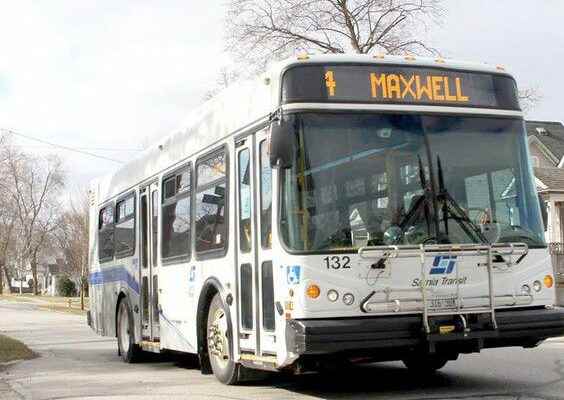Bus ridership in Sarnia, hammered by COVID-19 restrictions for two years, is back to what it was in September 2019.

After being hammered by COVID-19 restrictions for two years, bus ridership in Sarnia is now back to what it was in September 2019.
And with that resurgence, Sarnia Transit is proposing more regular trips to Bright’s Grove, to the city’s north, and extending the route time for buses to 40 from 30 minutes to deal with what staff are saying could be a record year for ridership in 2023.
“It’s definitely exciting,” transit manager Michelle Carter said about bus ridership in September hitting 152,000, “but at the same time, it’s a lot all at once.”
In September 2019, Sarnia Transit reported a ridership of about 150,000.
A large reason for this rebound is Lambton College students, who make up 53 per cent of overall ridership, she said.
Enrollment at the college is approximately 5,000 students, up from 3,900 in 2019, Carter said in a report.
The service that used to operate on peak and non-peak service schedules is busy now almost all of the time, she said.
Often, riders are experiencing standing room only while passengers are sometimes left behind at stops because there isn’t enough room during what were historically slower times of the day.
The service saw “slow growth” during the summer, but nothing like September’s surge, she said.
“September was a big surprise with the huge increase in ridership.”
To deal with the demand, including for increased service to Bright’s Grove, Heritage Park, Devine Street, Confederation Street and Mitton Village, transit is proposing a number of changes for Sarnia city council to consider Monday.
One is replacing the more sporadic Bright’s Grove service with a full-day schedule that runs from 6:30 am to 6:30 pm and from 8:30 pm to 10:30 pm Monday to Friday, with similar throughout-the-day service Saturdays and Sundays.
The full-day service was piloted in the summer to help people access the parks and beaches in the lakefront section of the city and was well received, Carter said, but it stopped when summer ended.
“Our summer service, we generally eliminate some unproductive routes … and increase some other areas.”
Hopes are now, with council’s approval, to bring that back as of Jan. 2, she said.
Also proposed are fixed evening routes in the city’s north, until 10:30 pm, along routes five and seven, where dial-a-ride service has been the norm past 6:30 pm for about 20 years, Carter said.
Passenger volume has grown five-fold on some evenings, Carter said.
“All of it is just too much for the dial-a-ride service that we operate,” she said.
Instead, the service where users can also request buses using the Rides-On-Demand app is being proposed for the London Line, Blackwell Sideroad and Confederation Line areas, including Heritage Park, Monday through Saturday from 7 pm to 10 pm
“Those areas currently receive no service during those times, and staff have received many requests for service,” Carter’s report stated.
Staff Monday also are asking council’s blessing to gather public feedback on changing the route times to 40 minutes from 30 minutes.
They’ve run at half-hour intervals for decades, but extensions, more stops, more riders and more traffic have contributed over the years to buses on average taking 35 minutes to complete their routes, Carter said.
“If we are making a permanent change, that will allow passengers to plan their travel better, as well as give that extra time for those things that we need like connections, or loading and unloading of passengers,” she said.
“More and more stops we’re having to make because there’s obviously more people along each route, which every time that occurs, then of course we feel the impact.”
Bus ridership in 2019 was 1.7 million, but dropped to 830,000 in 2020 in the wake of the COVID-19 pandemic, city officials have said.
